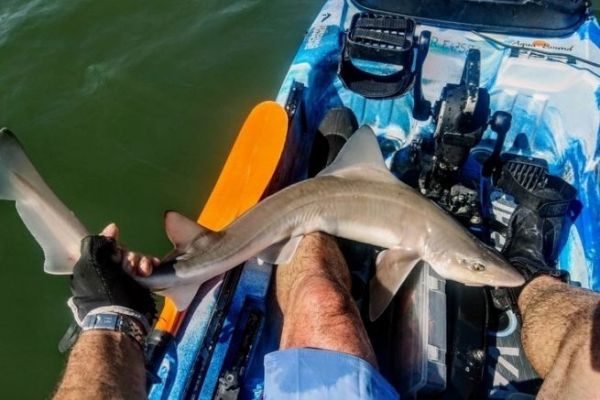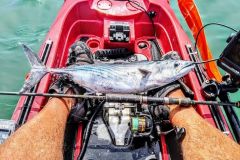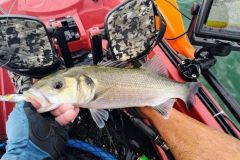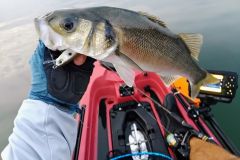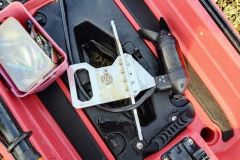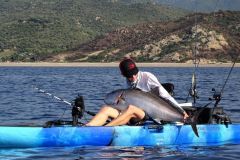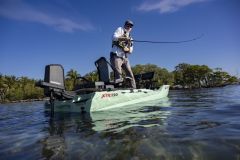A scientific project
Markings are carried out by APECS volunteers who take part in Ifremer scientific fishing campaigns, but also independently by volunteer recreational fishermen who are trained by the association. Once again, I re-signed for this project, still by kayak.
The main site in the Brest harbor is at the end of the harbor, but this year it seems to be present all over the place in different parts of the harbor. For this outing, I changed my habits a little. I normally only go out in the morning, but I had another nautical activity to do at the end of the day, so I combined business with pleasure. While waiting for the person to whom I was going to introduce this fishing activity, I got on the water at around 3.00 pm. I picked up about twenty green crabs down the road from my house before heading out to the site. The tide shifted around 3:30 p.m. with a coefficient of 60, which is ideal for my style of fishing, which is exclusively drifting.
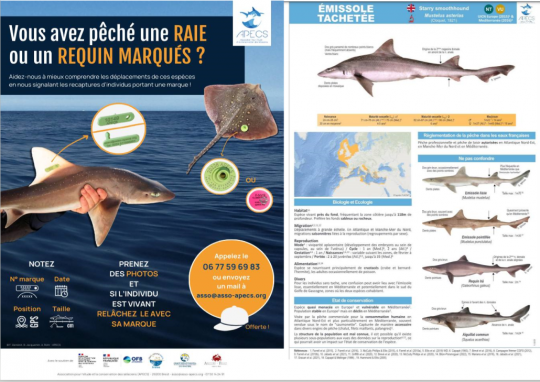
Fishing for emissoles
My rig includes a sliding sinker that I change as the current increases. A 2 m leader in 45/00 nylon and a 3/0 circle hook complete this simple rig. The bait is a nice green crab of respectable size. Taking big crabs selects the customers who will be interested in them.
First drift, after a few seconds, the crab flies at me, they're there... Next drift, I wait only 2 or 3 minutes before attracting another fish, I feel a significant "nibble", I strike Japanese-style, i.e. very hard to make sure it's effective, and the fight begins. I hook on the touch, I don't wait for the fish to engage, this allows me to hook them on the lip edge and doesn't hurt them too much. After marking, these fish are destined to be released in the best possible conditions.
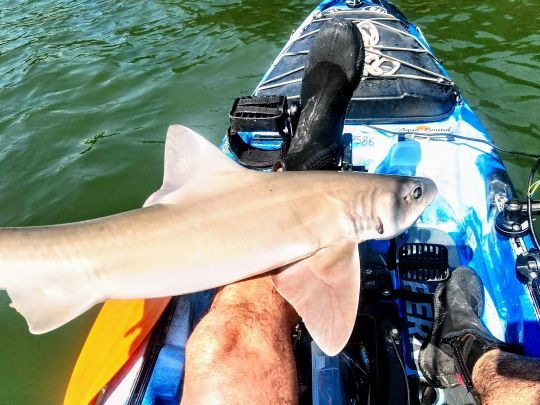
The fight with these little sharks is always violent, they're supercharged athletes and don't let themselves be reeled in easily. After a few minutes, it's time for the landing net, for which I've got a bigger one. Before marking, unhook the fish, tidy up the fishing area and keep the fish locked under the thigh. Make the first observations, male, female? Presence of wound marks, fitting of the ring, measurement (not easy in the kayak), weighing, the fish is put in a large bag from a Swedish furniture retailer... This allows the fish to calm down and not be handled more than necessary. The photos are taken and the fish is released. With practice, it takes no more than 2 minutes.
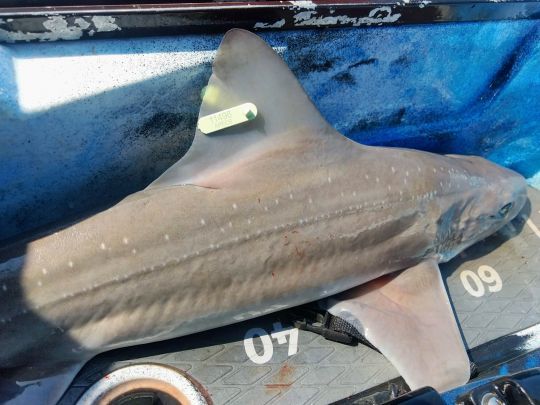
4 more fish will follow, and 3 will be unhooked by the kayak, the hook being just stuck in the corner of the mouth - the price to pay for not hurting them more than necessary. For the fish that came out, this represented over 5 linear metres. The fish were 93, 94, 104, 104, and 117 cm for the largest, which had trouble getting into the landing net. All females, all spotted except one which may be a smooth, I'm waiting for confirmation from the scientist piloting this project. 8 fish in 3 hours, which is more than good.
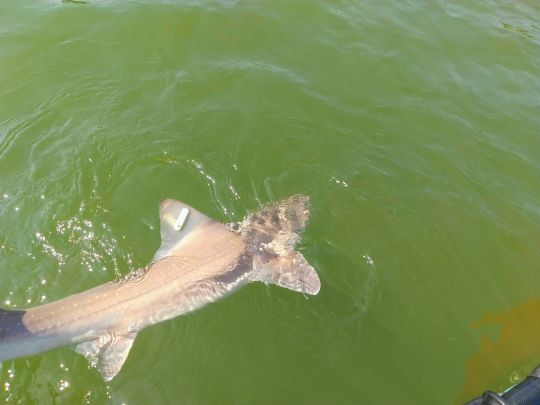
The previous Tuesday, teams in boats made over 60 markings, they love this part of the harbor. For the record, I picked up the guy I was supposed to take with me, and he caught his first emissola, 104 cm long, his cries of joy still echoing in the harbor.

 /
/ 